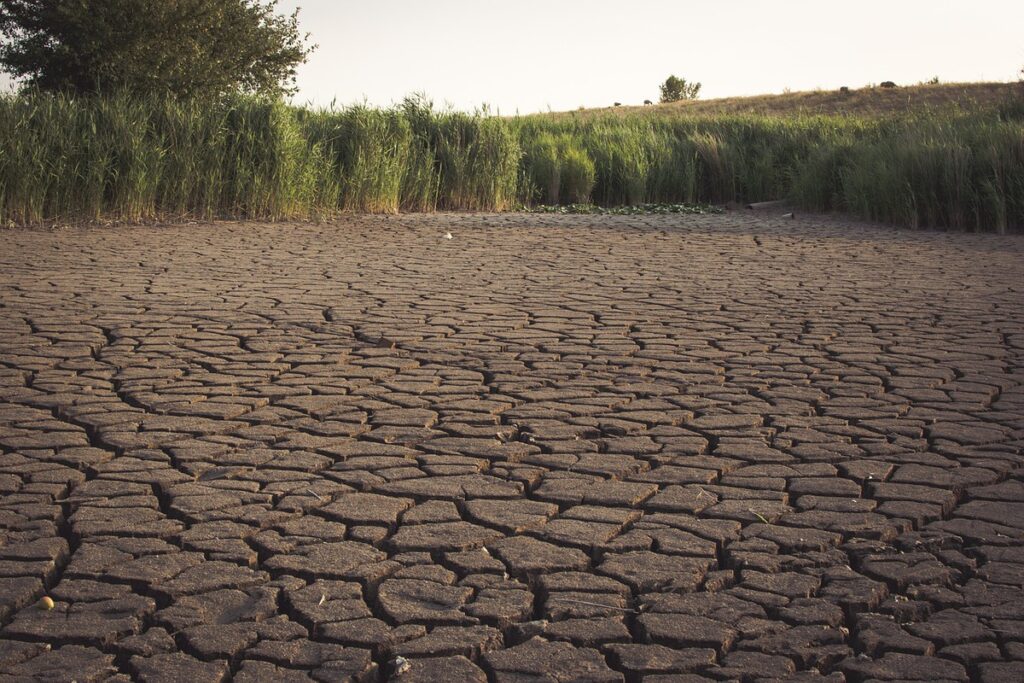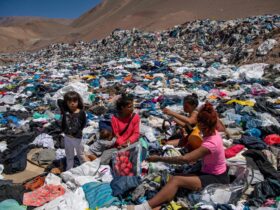Climate change is one of the most critical existential threats to humankind. Despite some world leaders and citizens disputing the basic facts of the ongoing climate crisis, the 20 warmest years on record have taken place in the last 22 years and climate change’s worst impacts may be irreversible by 2030. While this issue affects people across every region, the Middle East is especially vulnerable.
Water scarcity is a direct result of climate change. As temperatures rise, and extreme weather, such as droughts, become increasingly prevalent, water insecurity will begin causing mass deprivation and catastrophe across the Middle East and, in particular, Iraq. Rapidly increasing temperatures in Iraq are making water even more difficult to find, causing mass desertification across an already arid region.
This past July, in the capital of Baghdad, temperatures hit 125.2 degrees Fahrenheit, a life-threatening level of heat. Additionally, as water scarcity becomes reality, poor sanitation and a lack of clean drinking water are expected to increase the prevalence of disease. Moreover, Iraq’s population is growing, as seen by the annual population growth rate of 3.9% in 2013 and 2.3% in 2018. As the population continues to grow, the Iraqi government struggles to adequately provide food and water for its citizens.
The international community has acknowledged how water scarcity threatens the livelihoods of both humans and wildlife in the sixth United Nations Sustainable Development Goal (SDG), which targets access to clean water and sanitation, especially in desolate areas. While actionable steps can be taken to prevent the issue from worsening, these steps have not been implemented due to the chaos, corruption, low funding and lack of centralized control in Iraq.
Compared to its regional neighbors, Iraq has been the most impacted by water insecurity. As the entire Middle East is currently struggling with this issue, and many of these countries share the same water sources, there is a race to harvest water within a country’s borders. Iran, on Iraq’s eastern border, has built the Sardasht Dam and the Daryan Dam to harvest water from the Tigris and Euphrates rivers, limiting water which would have otherwise flowed into Iraq. Moreover, since 1970, Turkey has worked to increase its control over the region’s shared water source by building approximately 20 dams on the Euphrates and some more on the Tigris. Syria has also built its own dams to harvest water.
The race to secure water in the Middle East has left 81% of Iraq’s primary water sources under the control of other countries, some of which are regional and political rivals. Consequently, Iraq has little control over the amount of water that is coming into its borders, thereby making the nation more susceptible to the consequences of water insecurity. A combination of short-sighted solutions, an increase in the effects of climate change, previous conflict and tragic terrorist attacks threaten the future of Iraq and the entire Middle East — not just from a political perspective, but from a sustainability and resource-based perspective as well.
Since 2018, Iraq has been unable to provide all of its citizens with clean drinking water. In addition to being unable to provide clean water, Iraq also struggles to provide enough water to fulfill the basic needs of its citizens. Sanitary water is unable to reach Iraqi citizens due to the country’s poor water infrastructure. As a direct result of recent conflict in Iraq during the past few decades, the country’s water infrastructure has been virtually destroyed. The Gulf War, the U.S. Invasion of Iraq, and the post-war period, in particular, were characterized by significant blows to the country’s infrastructure. During the 1990-1991 Gulf War, the United States bombed four hydro-electric dams, which made it impossible for water treatment facilities to clean the country’s water. Moreover, a sewage plant in Baghdad was destroyed, subsequently causing sewage to spill into the Tigris.
The UN recognized that the Gulf War put Iraq in the “pre-industrial age” and started a resource “catastrophe.” Following the war, Iraq was unable to import water purification materials and construction supplies, as the country’s bank accounts were frozen and there were strict bans in place on what the country could import. After the U.S. invasion in 2003, the country’s water situation became even more desperate. 40% of Iraqis could not access safe drinking water and 70% of the country’s sewage plants needed repairs. The U.S. and Iraqi governments tried to bring more drinking water to people across Iraq; however, their plan to rebuild infrastructure was not as successful as they had hoped. At first, the two governments intended to bring water to 23 million Iraqis, but the coalition was only able to bring water to 7.6 million Iraqis. During the insurgency, which began in 2011, the Islamic State of Iraq and the Levant (ISIL) made the water issue worse by gaining control of strategic cities and towns that were located along the country’s two major rivers. ISIL would control the dams along the river and stop water that flowed downstream to towns that supported the government. Disastrously, ISIL would also poison the water supply.
While today, ISIL and its splinter groups do not have as much control in the country, the damage they have caused is overwhelming. Iraq’s rivers became so poisonous in the summer of 2018 that approximately 100,000 people were hospitalized. This sparked riots in the city of Barsa, an economically-significant city responsible for 80% of the country’s GDP.
While water scarcity threatens Iraq’s ability to be a successful and secure nation-state, it also has led to a rise in terrorism. A lack of water and basic necessities has led to an increase in unemployment and economic unrest. Additionally, communities have turned to terrorist organizations for food, water and protection. Youth unemployment in these regions has aided terrorist groups, as young people are attractive recruits and are often more vulnerable to manipulation and persuasion. In the past, terrorist organizations like Al-Qaeda and ISIL have targeted areas coping with water insecurity in an effort to expand their base. This demonstrates that water insecurity is a security issue and an even more significant threat to the international system.
The UN, various NGOs and several foreign governments all agree that countries in the Middle East must collaborate on a regional solution that works to divide the water sensibly. This solution includes water-sharing agreements, improved water governance and sustainable water management. Additionally, there must be a focus on access to potable water, water infrastructure and, importantly, sanitation. Regional leaders have yet to fully cooperate; thus, it is imperative that the international community promote fair, cooperative solutions to water insecurity in the Middle East. Otherwise, hope is dwindling for Iraq.
There is no exact playbook for overcoming the obstacle of water scarcity in Iraq and the Middle East. However, as climate change worsens, it is becoming increasingly harder to provide water for all people. Countries cannot afford to make mistakes and allow policy errors and politics to get in the way of clean drinking water for every person.







